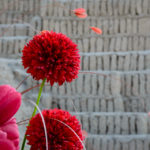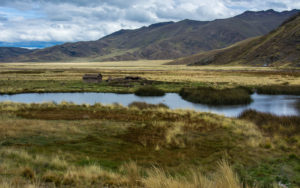
In the previous entry I shared 3 of the 6 Tips Before Traveling to Peru. If you’re just now joining in, then click here to find guidelines and links for vaccinations, packing light and dealing with high altitudes.
So here we go with tips 4, 5 and 6:
Earthquakes, Sunburns, and Mosquitoes.
But first! Let’s start with a pop quiz
* * * QUIZ TIME* * *

True or False It never rains in Lima.
[You’ll find the answer at the end of today’s blog.]
Peru Tip #4 Sun Protection
The Peruvian Sun Use to Warm, Now It Burns
That’s the gist of a common saying among inhabitants of the Peruvian altiplano as reported in this 2016 Newsweek article.
You don’t’ need me to tell you that if you’re gonna be outside, sunscreen, wide-brim hats, and long-sleeved shirts are always a good idea. (And don’t forget the sunglasses!)
However, sun protection is imperative when traveling in the southern climes, and especially when traveling in the higher altitudes of Peru.
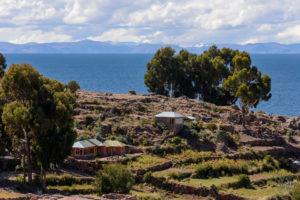
There are several reasons for Peru’s high UV index level:
1. Peru is very close to the equator, therefore the sun is almost straight overhead–not at a protective angle.
2. Many of Peru’s most popular tourist destinations are at altitude. That means less atmosphere between you and the sun’s radiation. Think of it this way–if you live at 12,000 feet you are almost 2.5 miles closer to the sun than if you live at sea level. (Remember Icarus?)
3. Last, but not least, several factors come together to cause the ozone layer over Peru to be particularly thin.
But don’t worry. You won’t be alone. Most locals are now using sunscreen regularly, wearing long-sleeved shirts—and even using umbrellas for protection.
The site, LimaEasy.com Weather & Climate in Lima is also a very good resource for more in depth information about the changing Peruvian climate.
Peru Tip #5 Mosquito Repellent
Peruvian mosquito-borne diseases include Malaria, Yellow Fever, Dengue Fever and most recently in the news—the zika virus.
If you plan to trek into the Peruvian jungle, along its riverbanks or its rain or cloud forests—take the mosquito repellent.
If you are sleeping out of doors in any of those climes, or where mosquitos can gain access to your juicy skin, then use a mosquito net.
But make sure up know how to use the net. If you don’t know—ask. You don’t want to wake up with mosquitoes on the INSIDE of your netting.
Now that being said…..my Peruvian adventure took place in May. It included the lowlands, the cloud forest, and all the way up to the altiplano region. I do not recall seeing even one mosquito during the entire trip.
However, you can never be too careful. This attitude applies at home as well as when travelling abroad.
[Don’t forget the importance of packing light: Those sun blocking long-shirts and pants can do double duty as protection against mosquitos.]
TripSavy.com has a great article on how how to prevent mosquito bites in Peru. Check it out.
Tip #6 Peru & Earthquakes—The Relationship is a Bit Shaky
As I write this entry, I see that Peru has had 6 earthquakes within the last 7 days, 15 in the past 30 days.
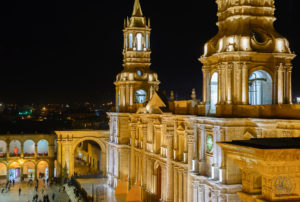
However, don’t let this statistic alarm you. We traveled throughout southern Peru for 3 weeks. During that time, I was not aware of even one quake. Though evidently the earth was almost constantly moving deep beneath our feet—we didn’t feel a thing.
Why Does Peru Have So Many Earthquakes?
Well, Peru sits right, smack on top of the convergence of two tectonic plates–the Nazca Plate and the South American Plate.
On our way to Arequipa, we pulled off the side of the road, to look into the crevice formed by the two plates pushing against each other. It was pretty awesome.
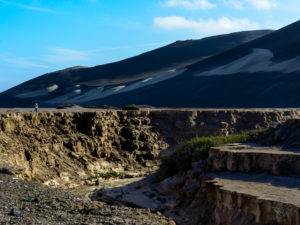
Because Peru is soooo earthquake prone, most of the hotels/businesses/historic sites don’t have elevators. If they do, they only go up a couple of floors. I refer you back to Peru Tip #2 and Peru Tip #3.
For more information on Peru and its earthquakes, visit LimaEasy.com Earthquakes in Peru.
Bonus Tip: Your Doctor Knows Best
Your personal physician is your most valuable resource for evaluating your health prior to traveling to Peru (or any destination).
The LonelyPlanet.com provides a great medical checklist as well as a list of other general health considerations when traveling to Peru. It can be a great resource for starting a conversation with your doctor.
Well, I’ve provided A LOT of links and resources in these last two postings. Next time we’ll begin the adventure.
Lima, here we come!!
Oh, I almost forgot. The answer to the pop quiz is True AND False. You see, it all depends on what your definition of rain is.
But I’ll give you a hint…those sun-dried bricks making up the wall behind the flowers? They could be 1,000 years old. . .or more.
Stay curious my friends. This is A Curious Trekker signing off.
I encourage you to look around the rest of the site where you will find additional general Travel Tips. Under the tab In Your Wallet you'll find a tip for how to have a "travel" credit card that gives you both chip and pin protection--even though such cards are not currently readily available (or affordable) in the United States.


